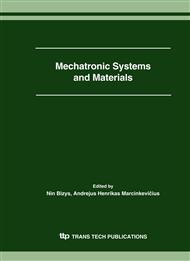p.541
p.545
p.549
p.555
p.559
p.565
p.571
p.577
p.583
Development of High-Speed Steels for Cast Metal-Cutting Tools
Abstract:
As-cast high-speed steels heat-treated have completely much lower impact toughness than that of the steels of a similar chemical composition but undergone hot working – rolling or forging. That is attributed to the influence of eutectic carbides, which especially being coarse, provide easily brittle intergrain fracture sites under low stress intensity factor levels. This is especially real for cast cutting tools. In order to exhibit good all-round performance the impact toughness enhancement of as-cast high-speed steels is obligatorily needed. In this connection it is expedient to turn from high-speed steels of conventional ledeburitic origin to high-speed steels of hypereutectoid and ferritic-carbidic ones with considerably lower carbide heterogeneity resulting in enhanced impact toughness. In the present work special features of the structure, phase composition and properties of such high-speed steels designed for cast tool are studied. In order to substitute tungsten by chromium in as-cast high-speed steel a special alloying system has also been developed.
Info:
Periodical:
Pages:
559-564
Citation:
Online since:
June 2006
Authors:
Keywords:
Price:
Сopyright:
© 2006 Trans Tech Publications Ltd. All Rights Reserved
Share:
Citation:


